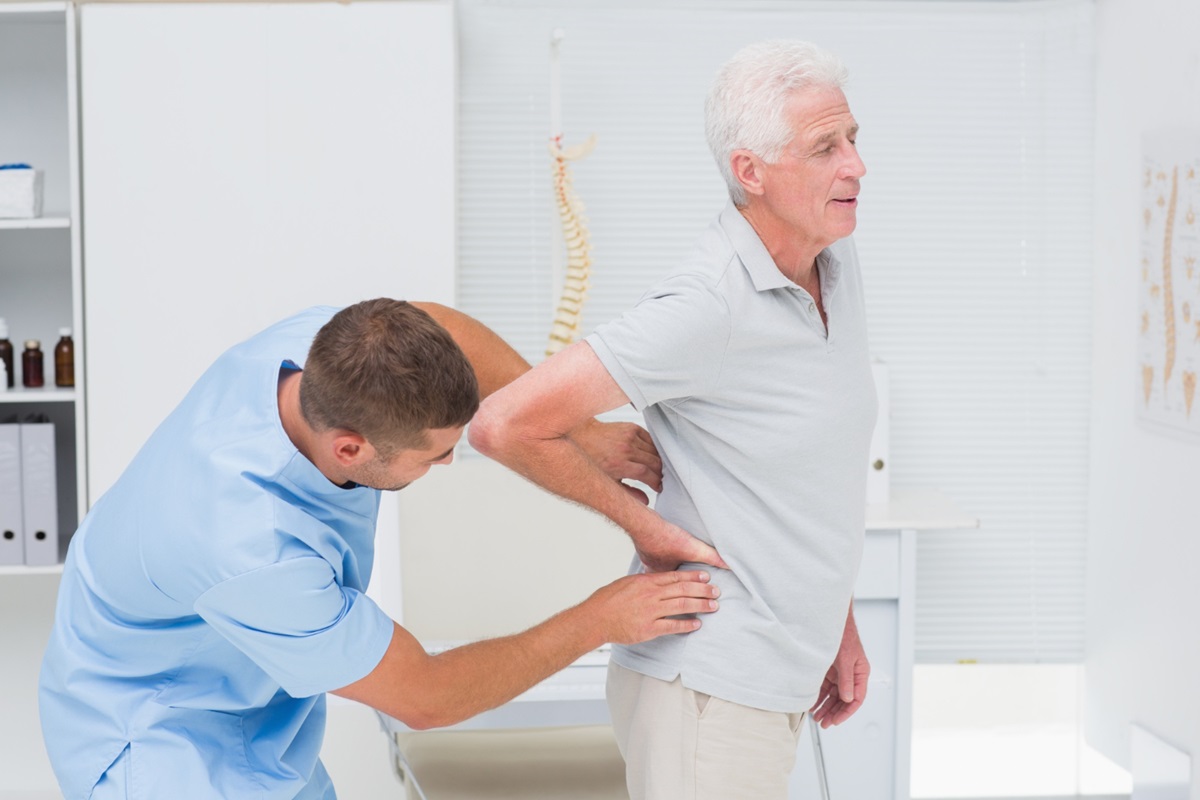If you’ve experienced lower back pain and nausea at the same time, you’re not alone—and you’re not imagining the connection. These two symptoms often occur together due to shared nerve pathways, visceral referrals, or underlying conditions. Spinal dysfunction, particularly in the lumbar region, is one of the most common culprits. When the spine is misaligned …
Lower Back Pain and Nausea: Causes and Treatments

If you’ve experienced lower back pain and nausea at the same time, you’re not alone—and you’re not imagining the connection. These two symptoms often occur together due to shared nerve pathways, visceral referrals, or underlying conditions. Spinal dysfunction, particularly in the lumbar region, is one of the most common culprits. When the spine is misaligned or under stress, it can influence the nervous system and trigger symptoms like nausea and lower back pain. Fortunately, physical therapy for lower back pain can play a pivotal role in identifying and addressing the root causes of both symptoms, offering long-term relief without heavy reliance on medication.
Low back discomfort is one of the most widespread musculoskeletal problems among adults, with studies estimating that up to 84% of individuals experience it during their lifetime. This statistic highlights how common lower back issues are—and why it’s important to identify their potential causes and connections to symptoms like nausea. Recognizing this link early allows for more effective, proactive treatment.
Understanding the Link Between Lower Back Pain and Nausea
Lower back pain and nausea often appear together in ways that can feel baffling. However, the human body’s systems are deeply interconnected through nerve networks, muscular structures, and even hormone signals. To fully understand the relationship between the two symptoms, it’s essential to explore how spinal health can influence abdominal comfort.
How the Spine Affects Other Systems
The spine plays a central role in communication between the brain and various organs through the autonomic nervous system. When spinal nerves become compressed or inflamed—often from herniated discs, muscle tension, or spinal injuries—they can affect digestive organs, leading to symptoms like nausea. This is why lower right back pain and nausea frequently occur together in cases of nerve irritation or dysfunction around the thoracolumbar region.
Why Spinal Misalignment or Disc Issues May Cause Nausea
Spinal issues such as fractures, nerve compression, or even whiplash injuries can impact nearby nerve clusters responsible for abdominal regulation. Disruptions here may cause poor digestion, indigestion, or even intense stomach pain, resulting in combined symptoms of nausea and lower back pain. Additionally, chronic spinal misalignment may contribute to organ pressure and tension, reinforcing discomfort across multiple systems.
So, can back pain cause nausea? In many cases, yes—particularly when nerve pathways that influence digestion and abdominal organ function are irritated or inflamed due to spinal problems.
How Physical Therapy Addresses Lower Back Pain and Nausea

When spinal dysfunction is the source of both lower back pain and nausea, physical therapy provides a focused and comprehensive treatment pathway. By improving alignment, muscular support, and posture, physical therapists can reduce nerve interference and related symptoms.
Comprehensive Evaluation by a Physical Therapist
A proper medical evaluation is the first step to identify the underlying cause of nausea and lower back pain. Physical therapists assess spinal alignment, poor posture, and any signs of nerve compression or muscle tension. At Sustain Physical Therapy and Performance, this evaluation includes a detailed history and screening for red flags like internal injuries, organ damage, or abdominal swelling.
Manual Therapy and Targeted Exercises
Techniques like soft tissue mobilization, joint mobilizations, and neuromuscular retraining relieve muscle tension and improve spinal flexibility. Manual therapy helps ease nerve compression, restore blood flow, and address the referred symptoms like nausea. Combined with corrective exercises, these interventions can reduce both lower back pain and nausea efficiently.
Core Strengthening and Postural Training
A strong core supports the spine and reduces strain on vital abdominal and pelvic structures. Weakness here is often linked to poor posture, which can worsen spinal alignment and lead to nausea and lower back pain. Physical therapy incorporates targeted exercises that reduce strain, improve breathing, and enhance overall posture to prevent recurrence.
Education on Body Mechanics and Daily Habits
Therapists at Sustain Physical Therapy and Performance educate patients on safe movement, lifting, and daily posture correction. Improving self-awareness, making dietary adjustments, and avoiding excess alcohol can also support better digestive and spinal health. These strategies minimize triggers and enhance outcomes over time.
When Nausea and Back Pain Stem from Other Conditions
Sometimes, symptoms stem from non-spinal medical issues. When this is the case, physical therapy plays a supportive—but not primary—role. Knowing when symptoms relate to conditions like gastrointestinal problems or organ damage ensures appropriate medical referral.
Kidney Stones or Infections
Kidney stones, kidney damage, or infections can cause severe lower right back pain and nausea. In the case of kidney infections, symptoms can develop quickly and may include sharp back pain, nausea, vomiting, and high fever. These types of infections require prompt medical attention and are typically managed with antibiotics for infections, fluids, and rest.
Associated symptoms may include fever, vomiting, blood in the urine, and persistent symptoms despite rest. These cases often require stone removal, antibiotics for infections, or even emergency care and should be seen first by a physician.
Gastrointestinal or Liver Issues
Conditions like pancreatitis, gallbladder issues, diverticular disease, or liver complications may manifest with nausea and lower back pain. Signs such as abdominal swelling, itchy skin, or upper right stomach pain may indicate liver trauma or biliary colic. Though PT can’t directly treat these, improving posture and reducing organ pressure can offer relief during recovery.
Pregnancy-Related Changes
Pregnancy brings about hormonal changes, including rising estrogen and human chorionic gonadotropin, which can influence digestion and musculoskeletal function. Symptoms such as morning sickness, weight gain, and hyperemesis gravidarum are common. Physical therapy for lower back pain during pregnancy can improve posture, reduce strain, and ease both nausea and discomfort.
Stress and Anxiety
Stress affects both digestion and musculoskeletal health through the autonomic nervous system. It can increase muscle tension, impact breathing, and contribute to poor digestion. Incorporating stress-relief techniques and gentle therapy can reduce both lower back pain and nausea.
Red Flags – When to See a Doctor First
While back pain treatment at Sustain Physical Therapy is effective for spinal-related symptoms, some warning signs need urgent medical attention. Don’t delay care if you experience:
- High fever, chills, or vomiting
- Unexplained weight loss or severe symptoms
- Signs of appendicitis, spinal abscess, or heart attacks
- Blood in urine or stool
- Progressive neurological deficits
In these cases, go to the emergency room or see a doctor immediately. Once cleared, therapy can resume safely.
How Sustain Physical Therapy and Performance Can Help

At Sustain Physical Therapy and Performance, we use a multidisciplinary approach to address both spinal and referred symptoms. Our expert clinicians provide evidence-based care for those dealing with lower back pain and nausea related to musculoskeletal and postural dysfunctions.
We offer:
- Thorough spinal and postural diagnostic imaging and assessment
- Tailored treatment plans for each patient’s symptoms
- A mix of manual therapy, shockwave therapy, and neuromuscular retraining
- Support for both acute and chronic pain symptoms through guided physical therapy
Whether you need help with recurring symptoms or post-medical recovery, our team provides comprehensive care with lasting results.
Conclusion
Though not always obviously linked, lower back pain and nausea often share common causes involving spinal alignment, nerve sensitivity, and posture. Physical therapy for lower back pain offers a safe, non-invasive solution to reduce both symptoms and improve overall function. At Sustain Physical Therapy and Performance, we focus on the root causes of discomfort to help you feel better, move better, and prevent recurrence.
FAQs
What is a red flag on lower back pain?
Red flags include high fever, vomiting, severe symptoms, unexplained weight loss, or loss of bladder control. These may signal serious conditions like appendicitis, pancreatitis, or organ damage and require immediate medical attention.
What sickness starts with lower back pain?
Conditions like kidney stones, gastroenteritis, or gallbladder conditions can start with lower back pain and nausea. If symptoms persist or worsen, seek medical care and follow up with PT after clearance.
Can poor posture cause nausea?
Yes, poor posture can compress organs and irritate nerves, leading to both nausea and lower back pain. Improving posture through physical therapy can reduce strain and help alleviate digestive discomfort.
Dr. Adam Babcock PT, DPT
“We Help Active Adults Quickly Recover From Pain Or Injury So They Can Stay Active, Get Back To What They Love To Do, and Do It For Decades”






